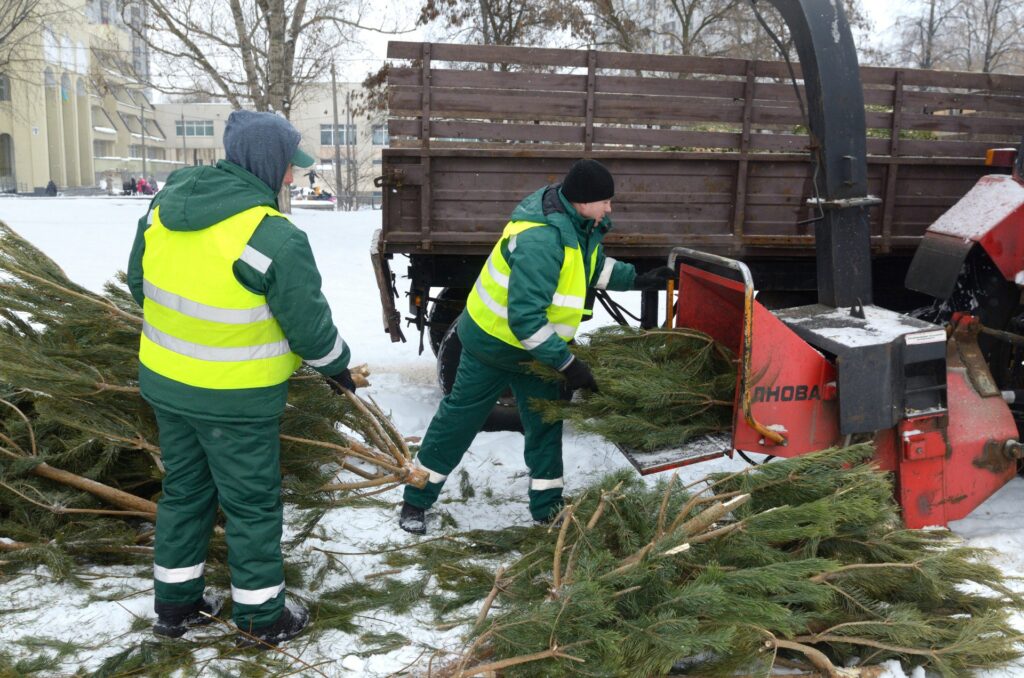Best Christmas Tree Disposal for the Environment and Pollinators

Christmas trees bring a touch of the outside into homes over the holidays. The lights and look of a tree can transform any room into a vision of holiday cheer. The tree becomes the center of attention as gifts are placed underneath, and unwrapping happens in a flash on Christmas morning. Since the tree is such a glorious symbol of Christmas, many people struggle with how best to dispose of their Christmas trees while staying true to helping the environment. So, although Christmas is over for 2022, finish strong by finding an eco-friendly way to re-purpose your tree while helping local pollinators and critters too!
If you decided on a fake tree this year, your task would be easy. Take the decorations off, remove the lights, box them up, and store them for another year. However, if you went au natural this year, there are a few options for tree disposal that are distinct dos and don’ts when it comes to disposing of your tree while helping the environment.
Thoughtful Christmas Tree Disposal
Since the sheer size of a Christmas tree can make it the most significant piece of trash to dispose of in the entire year, being thoughtful about the process can significantly impact the environment. It is estimated that more than 14 million real trees made it into homes across the nation, which is lots of waste if done haphazardly!
Although some have already taken down the tree with all its decorations, some are still pondering how to best dispose of their Christmas tree while staying eco-friendly. Increased awareness and concern for the environment and declining pollinator populations have environmentally conscious citizens wanting to do the right thing this year regarding disposing of their Christmas trees.
Mulching is Recycling
Although many tend to overthink how to best dispose of their Christmas tree at the end of the year, mulching is an excellent and easy method that keeps the carbon it has removed from the atmosphere in the wood, where it can eventually return to the soil instead of back into the air. Additionally, many businesses that sell trees from farms offer recycling programs, or public works departments often agree to take trees to make woodchips for parks and community gardens. Home Depot is one of the companies that offer to take trees after the holidays, and they have a recycling program and rent woodchippers if you want to make and use your very own Christmas mulch!
Creating a Christmas Tree Habitat
If you went with a real tree this year, and it has roots or a ball at the end, try planting it and watching it grow! If your tree was cut, there are still several ways to use the tree to give back to the environment. Beaches often use trees for erosion barriers, so checking with your beach community to see if there is a need is an excellent way to re-purpose a Christmas tree and do something good for the environment. Second, tossing your tree into a pond will sink and become an incredible source for fish to feed. If you do not have a pond on your property, check with local groups to ensure this method is okay and welcomed. Recycling with a local group is a solid way to plug into your community for a collective effort locally. Third, laying the tree down in the forest or backyard can be a haven for critters, birds, and pollinators. Bees are coming out of winter soon, and any new food sources will be incredibly beneficial! Birds and creatures can nest, and the tree will create its own ecosystem where pollinators can thrive. Lastly, see if your local zoo collects trees for their big cats – tigers and lions treat trees as toys, but there will be specific requirements so that the tree is safe for the animals (no flocking).
The Do NOTs of Christmas Tree Disposal
Although there are many ways to reuse and re-purpose a Christmas tree after the holiday, some things are bad for the environment and should be avoided. First, do not burn your tree in the fireplace because it has flammable oils that can start a house fire. Additionally, by burning the tree, all the carbon goes back into the atmosphere, so it counters any recycling efforts you think you made to help the environment. Second, do not let your tree end up in the landfill. Although trees will break down, the amount and type of trash at the landfill is a breeding ground for methane buildup and is even more damaging to the atmosphere.
If you are unsure where to start, find local recycling solutions and decide. You can also check with a local beekeeper and find out what sources they suggest for recycling in the area.
